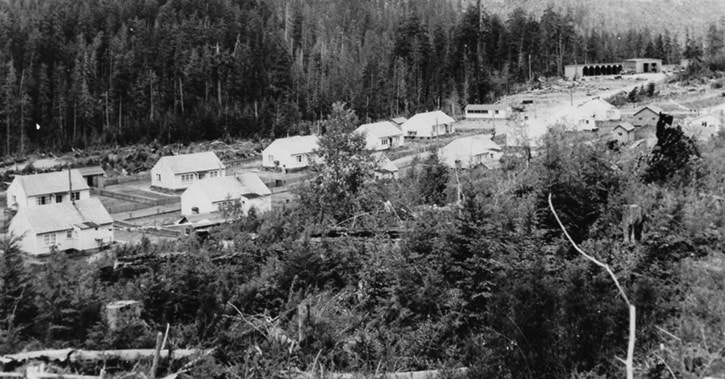Bob Robertson, father of Sooke businesswoman Jeannette Wilford, was superintendent at B.C. Forest Products Renfrew Division during the 1950s, and photographs from his collections have given us insight into logging camp life half a century ago.
Bear Creek Valley has figured prominently in the logging history of our coast, its heavily forested hillsides predominately producing Douglas-fir, sprinkled with red cedar, hemlock and balsam. It lies northeast of Port Renfrew.
Malahat Logging began work there in 1936, building 20 bridges and laying miles of railway track.
The first housing for workers was as bunkhouses, which the company barged in by water from the Island Logging Company’s operations at Point No Point.
The logs harvested from the hillsides were hauled by steam-powered Shay locomotives to a long curved wharf that jutted into the inlet at Port Renfrew, where the logs were dumped and formed into Davis rafts.
The 1939 construction of Malahat Logging’s largest railway trestle, the Bear Creek Bridge, towering 235 feet above the creek, expanded its reach further into the rich stands of Douglas-fir.
The magazine BC Lumberman’s November 1938 issue reported that 200 to 250 men were employed at the camp at its height of operations. There was a school at the camp as well.
The operation was bought by B.C. Forest Products in 1946 and it was a few years later that Robertson held a leading role in the forestry management.
This photo taken in the early 1950s shows not only the most comfortable cottages supplied as married quarters, but in the distance, shops for repairing logging equipment. Bear Creek School is seen right of centre, but missing from view, though an extremely important component, where the camp cookhouse and dining quarters, where the kitchen was equipped with massive mixers and ovens to feed the ravenous appetites earned by the heavy work in the woods.
In the 1940s, it became possible for the workers here to get a ride on a railway “speeder” and meet up with a road which took them to Shawnigan Lake. In time, this form of access to civilization meant that the CPR’s Princess Maquinna no longer made its weekly trip from Victoria up the coast.
In 1958, of course, the logging roads between Jordan River and Renfrew were connected, and a public route from the once-remote logging community to Sooke and Victoria meant a whole new way of life. The cottages shown here were moved to Beach Camp at the edge of the inlet in Port Renfrew, where many of them remain today.
•••
Elida Peers is the historian of Sooke Region Museum.
